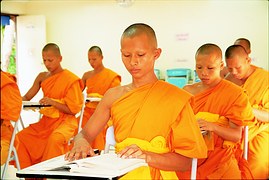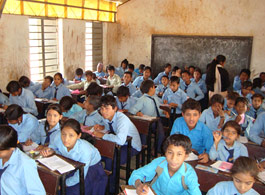As American students are being propelled every year to see the world as more of a global village and marketplace which can be reached at any moment through the World Wide Web; it is essential that they become aware of the cultural differences that exist between people and places. This unit is designed to  introduce students to tools and methods that can be used as a bridge between any two cultures to assure that effective communication is not disabled by either cultural misconceptions or ignorance. It is my sincere hope that as our students become the global leaders of the future, they will not allow cultural differences to get in the way of the progress that can and should be shared by all nations of the world.
introduce students to tools and methods that can be used as a bridge between any two cultures to assure that effective communication is not disabled by either cultural misconceptions or ignorance. It is my sincere hope that as our students become the global leaders of the future, they will not allow cultural differences to get in the way of the progress that can and should be shared by all nations of the world.
This unit focuses on the Himalayan region for several reasons:
- It will be foreign to the vast majority of students in your classes
- It is relatively ignored in our history, geography, and cultural studies textbooks

- It is, itself, an area of vast complexity with myriad cultural and ethnic variations
- Out of necessity, the people of this region have learned that you do not have to give up your culture or identity to peacefully co-exist with other people who may hold very different cultural views and practices.
 This unit is designed to be used as either a separate unit of study that will take approximately 1 week of class time or as individual activities that can be used to enhance any lesson that requires students to encounter or explore other cultures. It is not designed to be a complete look at any culture, but hopefully will bring the type of awareness to students that inspires further exploration and interest in the cultures that are being studied.
This unit is designed to be used as either a separate unit of study that will take approximately 1 week of class time or as individual activities that can be used to enhance any lesson that requires students to encounter or explore other cultures. It is not designed to be a complete look at any culture, but hopefully will bring the type of awareness to students that inspires further exploration and interest in the cultures that are being studied.
Outcomes:
After completing this unit, students will:
- understand that different peoples have different views
- discover that we do not have to hate each just because we disagree
- understand that examining other cultures requires accepting that they have views that may not be the same as ours
- be able to analyze other cultures, understanding that doing so requires the ability to see things from their perspective and/or place in the world.
- synthesize information to create an analysis of how cultures compare to one another.
- be able to evaluate others work through the use of constructive criticism